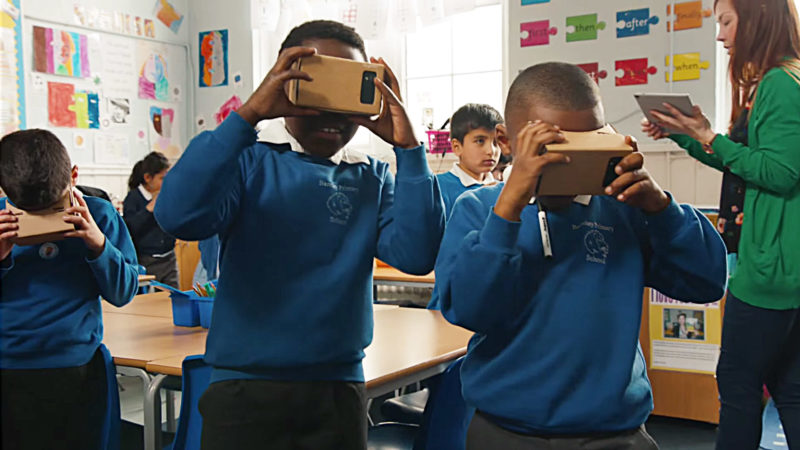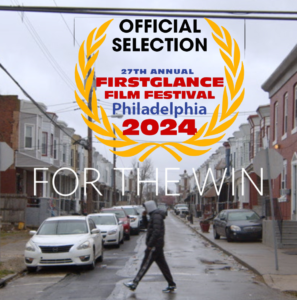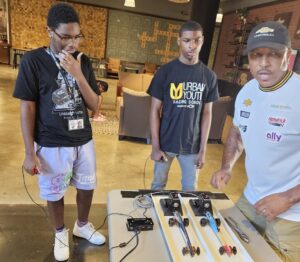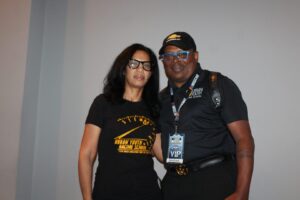360° OF EDUCATION: MATTEL VIEW MASTER
Oculus Rift and Samsung Gear VR were not recommended for young children. However, Mattel has launched the first Virtual Reality headset specialized for kids: the ViewMaster. In collaboration with Google, the toy company offers a “cardboard” version in solid red plastic. Instead of fantasy worlds and fairy dust, however, Mattel takes kids to real places: Outer space, distant countries or the animal kingdom. ViewMaster started with Experience Packs – a combination of AR and VR – created in collaboration with National Geographic. True to the motto “Learn by experience”, children get 360 degrees of playful education. But do children really like to learn in VR?

As often, there is no black or white: my 5-year old son likes experiencing virtual zoos or underwater worlds with VR. On the other hand, he spends the same time discovering jurassic worlds in traditional books. It seems that for kids VR is the same as books,
BUILDING AND EXPLORING VIRTUAL WORLDS
With twelve participants, Dubit’s study is, of course, far from representative. However, it still offers a glimpse into the potential kids see in VR. Most excitement was – unsurprisingly – not stirred by virtual education but by the possibilities for games and entertainment. While the younger children were fine with being a passive observer on roller coaster rides or flight simulations, older kids wanted to actively shape virtual worlds – “like building a school or a castle”. The huge popularity of Minecraft – a game that allows players to build and explore environments made from blocks – might have to do with that wish. Minecraft was among the games that the kids in the study would have loved to play in Virtual Reality. Now, their wish is about to come true: The world has just been offered a first glance at Minecraft in VR. However, since it requires an Oculus Rift and a pretty powerful computer, the experience will be reserved to only a few children – those with very techsavvy or extraordinarily generous parents.

Jan Heitger, VR early-adopter at RE’FLEKT, underlines the importance of Minecraft: „It is hard to overstate the importance of Minecraft for the young generation of digital natives. ‚Digital Lego‘ is one way to describe Minecraft, which makes it sound familiar and maybe a bit boring. Another definition would be ‚Virtual World Engine‘, which is a more fitting description for the power of this application“. It allows its young inhabitants to create whole worlds out of nothing but their thoughts and creativity. And millions of kids are doing it, collaborating on their own servers with friends from their neighbourhood or from a different continent. „Virtual Reality allows them to physically enter these creations and walk through imaginary castles with their friends. Something that will be commonplace sooner than we think“, says Heitger.
HOW TO CREATE VIRTUAL REALITY FOR KIDS
Minecraft, however, is not the only thing that lets kids create virtual environments. One of the first applications that focuses on easy VR creation for kids is CoSpaces. The tool doesn’t come from one of the big players, but a startup called Delightex. In the browser app, users create 3D content. The elements are simply dragged onto the stage from an object library. A few mouse clicks change color, size, opacity or elevation. Everything created in the studio, can be viewed later on mobile devices or VR headsets. This is a pretty cool and easy way for kids to step into the scenes they created using their smartphones. Here you see what I’ve created in few minutes. Of course, kids have much more fantasy.

You want to play with it? Delightex is currently offering Early Access – open to anyone who is interested – in order to test and improve their product. The first testers already enjoyed themselves: “When we invited some kids to the office and let them play with CoSpaces, they didn’t want to stop. It wasn’t easy to call it a day”, Thomas Gläser, Head of UX and co-founder of Push Conference, says. Where does this fascination come from? To Gläser it’s pretty clear: “I think we all wanted to be able to become a part of the world we were dreaming of when we were little. Kids have a lot of creative energy and love fantasy worlds. Virtual Reality gives them the opportunity to use the first in order to build the latter“.
Young people are natives in the digital realm. Now that virtual reality is getting easier and easier to access, it seems likely that they are soon going to put down roots here too. They grow up with smartphones and 24/7 access to the internet. For them, new technologies aren’t something to question. “We are all explorers”, Thomas Gläser says. Despite this, VR developer Jan Heitger addresses a stark reality of the ‚kids in VR realm‘ (please excuse the pun): „Ease of use will be important, but so will security aspects and a working parental control systems. Microsoft, the new owners of Minecraft, are surely working on their own ideas as well. It will be interesting to see what vision for „kid friendly VR“ will ultimately emerge from this“.
Image sources: Delightex, Gadgets 360
Parents know: Kids live in their own worlds. Worlds entirely made of pink and fairy dust. Worlds full of fantasy creatures bashing each other’s heads in. Worlds revolving around that one beloved celebrity whose name you keep forgetting. This raises the question: Don’t children need a stronger connection to the real world – instead of Virtual Reality?










